
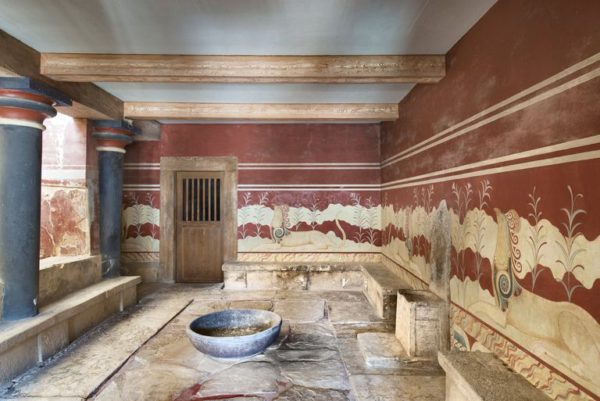 Explore the ancient civilization of Minoan Crete within a tour of the ruins of the ancient palace, discover the hidden treasures of the Minoan culture museum and experience the ancient traditions and taste ancient recipes at Theme Park.
Explore the ancient civilization of Minoan Crete within a tour of the ruins of the ancient palace, discover the hidden treasures of the Minoan culture museum and experience the ancient traditions and taste ancient recipes at Theme Park.
Touch the history and visit the center of Minoan civilization and capital of Minoan Crete that once flourished two thousand years ago, being the seat of the wise king Minos. According to the well-known myth, the labyrinth underneath contained the ill famous Minotaur – half-man half-bull that devoured young virgins. Until Roman times, The Palace of Knossos was already boosted by powerful streets, plumbing, and sewage system!
At the Cretan Thematic Park you will be able to see what people of the Minoan historical period looked like; learn more about their everyday life and optionally try delicious dishes that highlight the gastronomic glory of this ancient civilization.
The Heraklion Archaeological Museum is regarded as one of Europe’s most important museums. The museum brings together archaeological finds from all over Crete, covering over 5500 years of the island’s history. Pride of place is given to the treasures of Minoan civilization, the entire historical course of which can thus be appreciated.
A stop to Fodele village. El Greco (The Greek), a famous Greek painter, sculptor and architect of the Spanish Renaissance, or to use his correct name Domenikos Theotokopoulos (1541 to 1614), was born here. El Greco’s nickname reflects his Greek descent and Spanish citizenship. The artist normally signed his paintings with his full birth name in Greek letters, Δομήνικος Θεοτοκόπουλος, often adding the word Κρής (Cretan). In his youth he studied icon painting, at the age of 26 he went to Venice, like many Greek artists of his modernity. El Greco’s dramatic and expressionistic style was met with puzzlement by his contemporaries but found appreciation in the 20th century. He is regarded as a precursor of both Expressionism and Cubism, while his personality and works were a source of inspiration for poets and writers such as Rainer Maria Rilke and Nikos Kazantzakis.
A small collection of memorabilia and some interestingly displayed reproductions are housed in a building dating back to the life of this world-renowned painter and renaissance figure.
El Greco House and Museum lie within walking distance, at about 1km from the village center.
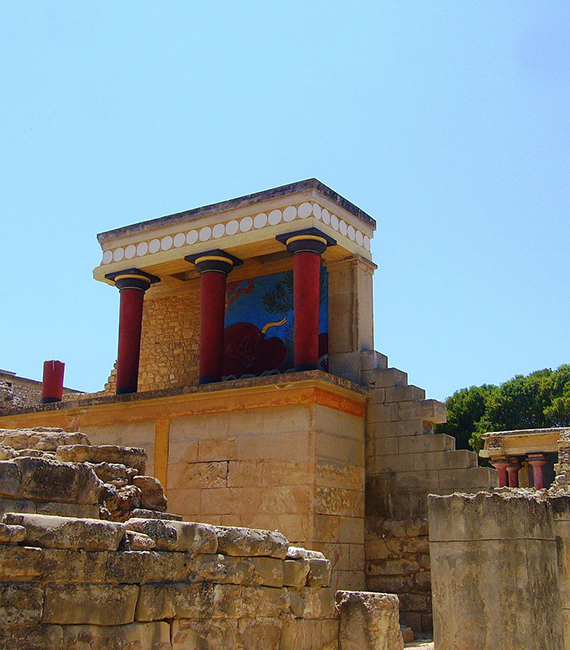
Touch the history and visit the center of Minoan civilization and capital of Minoan Crete that once flourished two thousand years ago, being the seat of the wise king Minos. According to the well-known myth, the labyrinth underneath contained the ill famous Minotaur – half-man half-bull that devoured young virgins. Until Roman times, The Palace of Knossos was already boosted by powerful streets, plumbing, and sewage system!
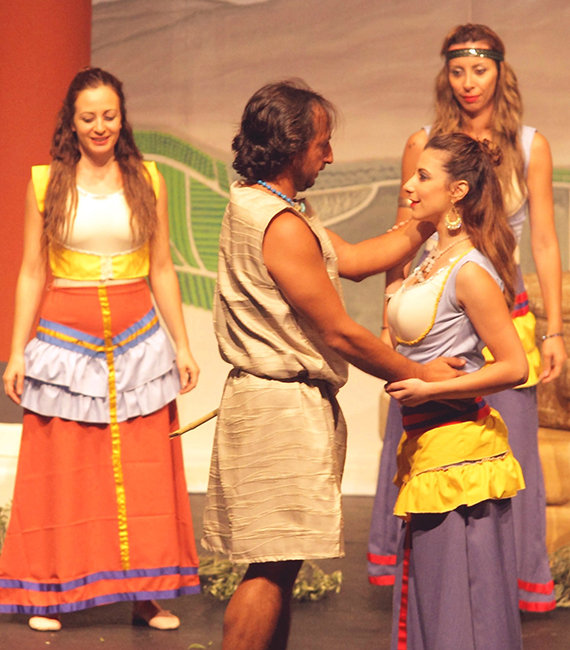
At the Cretan Thematic Park you will be able to see what people of the Minoan historical period looked like; learn more about their everyday life and optionally try delicious dishes that highlight the gastronomic glory of this ancient civilization.
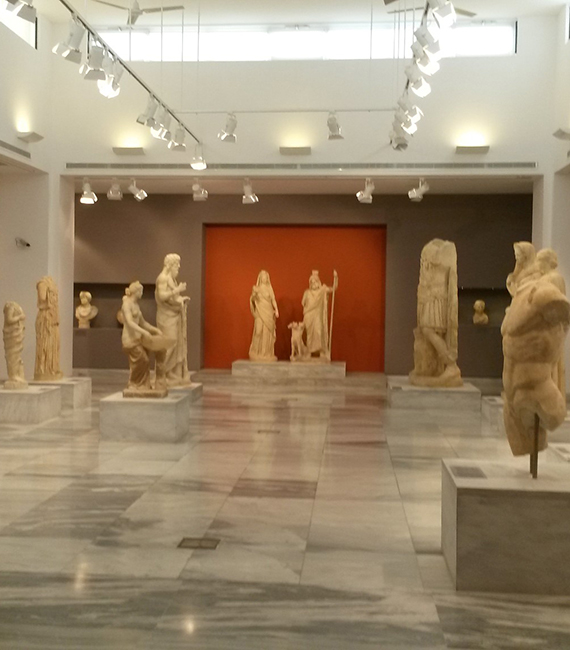
The Heraklion Archaeological Museum is regarded as one of Europe’s most important museums. The museum brings together archaeological finds from all over Crete, covering over 5500 years of the island’s history. Pride of place is given to the treasures of Minoan civilization, the entire historical course of which can thus be appreciated.
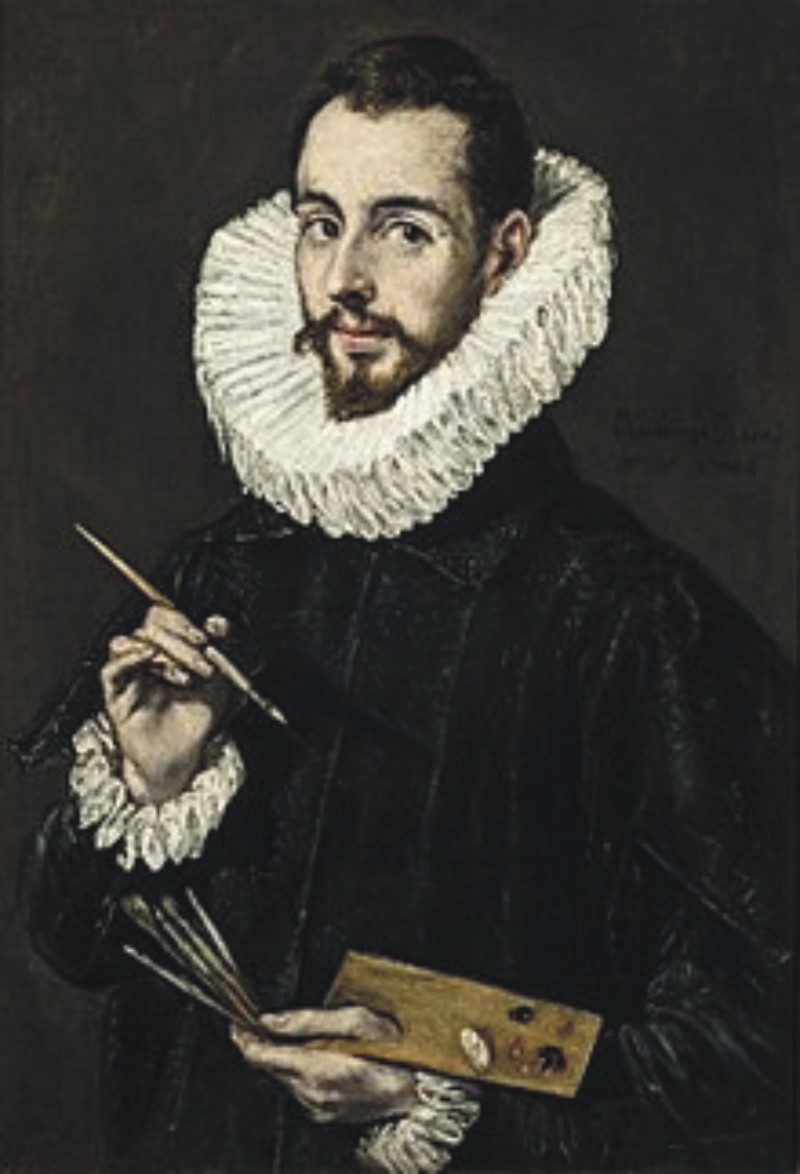
A stop to Fodele village. El Greco (The Greek), a famous Greek painter, sculptor and architect of the Spanish Renaissance, or to use his correct name Domenikos Theotokopoulos (1541 to 1614), was born here. El Greco’s nickname reflects his Greek descent and Spanish citizenship. The artist normally signed his paintings with his full birth name in Greek letters, Δομήνικος Θεοτοκόπουλος, often adding the word Κρής (Cretan). In his youth he studied icon painting, at the age of 26 he went to Venice, like many Greek artists of his modernity. El Greco’s dramatic and expressionistic style was met with puzzlement by his contemporaries but found appreciation in the 20th century. He is regarded as a precursor of both Expressionism and Cubism, while his personality and works were a source of inspiration for poets and writers such as Rainer Maria Rilke and Nikos Kazantzakis.
A small collection of memorabilia and some interestingly displayed reproductions are housed in a building dating back to the life of this world-renowned painter and renaissance figure.
El Greco House and Museum lie within walking distance, at about 1km from the village center.
If all members of the group, agree changes in the itinerary may be done according to their wishes within the mileage and time limits of the excursion.
What this package includes:
Not included:
08:15 – Pick up from Chania
10:00 – Arrival at Knossos
11:45 – Depart from Knossos
12:00 – Arrival at Cretan Thematic Park
14:00 – Depart from Cretan Thematic Park
14:30 – Arrival at Heraklion Archaeological Museum
15.30 – Depart from Heraklion Archaeological Museum
18:00 – Drop off